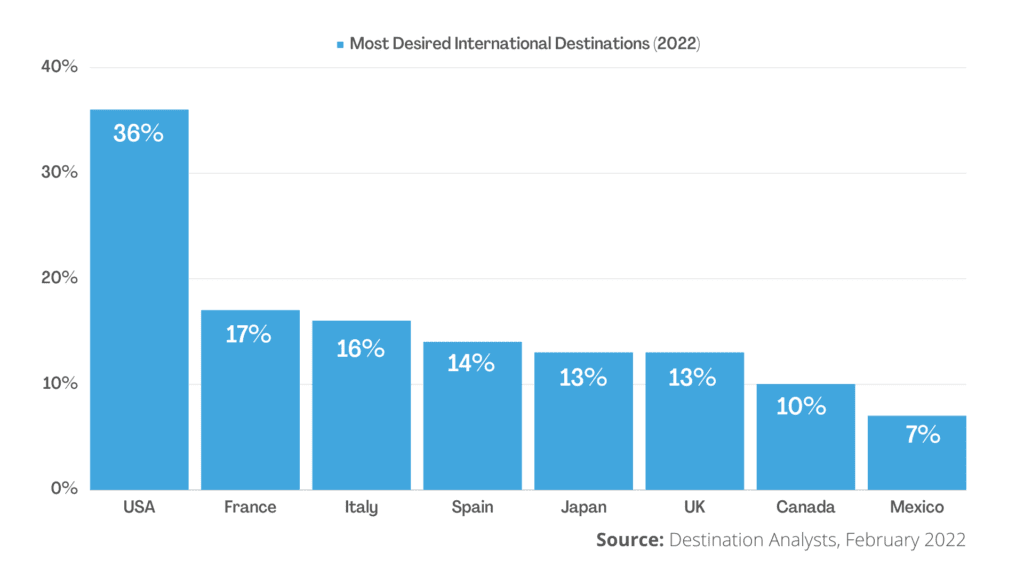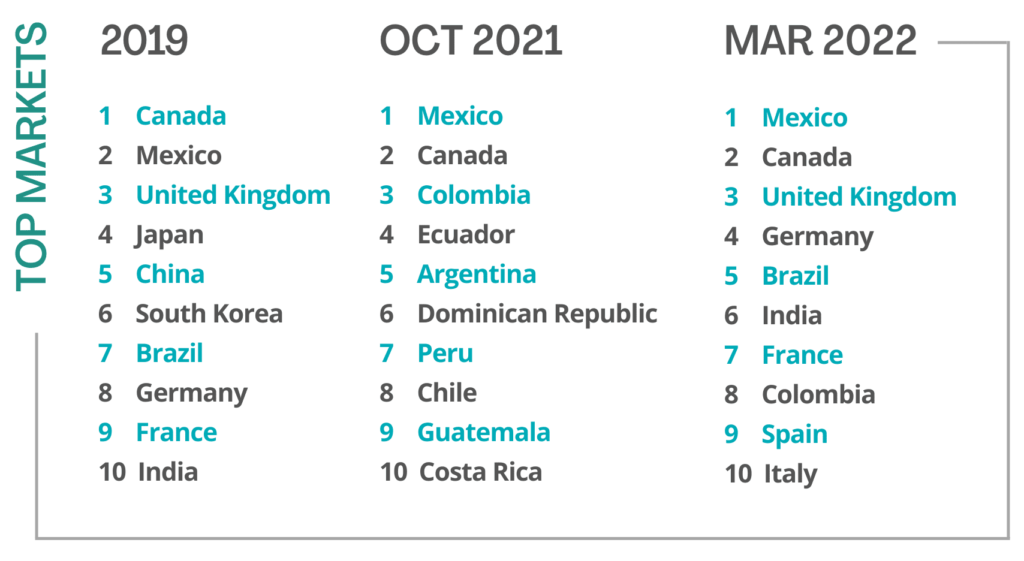
IPW is the travel industry’s premier international marketplace and the largest inbound travel trade show in the world, with past IPWs (pre Covid) generating more than $5 billion a year in future travel into the United States. The business appointment-based show connects U.S. travel exhibitors (including U.S. travel organizations, U.S. Government Commercial Service representatives and marketing and technology providers) with travel buyers and media to promote their product and negotiate future business.
After a hiatus of two years due to the pandemic, IPW returned this year in June bigger than ever attracting almost 5,000 delegates from 60 countries. I attended as a journalist, and these are my ten biggest post Covid travel takeaways from four days of press conferences, meetings and events.
1. International M&E generate significant economic activity
A major component of inbound travel to the U.S. is business travel, accounting for (pre pandemic) $1 out of every $5 dollars spent by international travelers. In 2019, more than six million international visitors attended conferences and trade shows – generating more than $20 billion to the U.S. economy. However, after two years of travel restrictions and Covid-related uncertainty, international business travel spending remains 79% below 2019 levels. The good news is that predicted meeting levels for 2023 are for 106.3 percent of 2019 levels.
2. A greener travel industry
Sustainable travel continues to a be a big priority for travel businesses – both large and small. With climate change impacting across destinations and operators, many sectors of the U.S. travel industry are doing their part to lower carbon emissions, reduce waste and protect the environment. Carbon neutrality targets are high on the agenda for U.S. airlines and the major carriers have pledged to be carbon neutral by 2050. Car rental companies are updating their fleets to include electric vehicles and the U.S. Congress recently enacted a new National Electric Vehicle Infrastructure (NEVI) Formula Program that will make nearly $5 billion available for a national EV charging network. These types of commitments and investments are core to the future of travel.
3. Most desired destinations post pandemic
While the U.S. has always been a popular travel destination, as of June 2022, the U.S. is the most desired destination for 36% of likely international travelers, which is nearly twice France, the second favorite on the list (with Italy coming in third). The United States’ handling of the pandemic has had a positive impact on international travelers’ interest in visiting, with 43% now saying they are more interested in the U.S. in the next two years. These figures were before the U.S. cut Covid entry requirements, so you imagine the popularity of the U.S. as a destination to increase even more.

4. The top inbound travel markets to the U.S.
Prior to the pandemic, Europe dominated overseas arrivals in the U.S with a 39% share, followed by Asia at 30% while Latin America accounted for 22%. This changed drastically in 2021 and prior to the reopening of borders in November 2021, Europe’s share declined to just 14% and Asia to 11/%, while Latin America accounted for a staggering 66%. So, why the huge flip? The Latin American markets weren’t denied entrance to the U.S, nor did they have strict quarantine restrictions upon returning home. However, by March 2022, the pendulum had swung back in Europe’s favor as travel bans were lifted across the region.

5. Sustainable travel influencing travelers’ decisions
Heightened awareness and desire for sustainable travel options are increasingly influencing travelers’ decisions, with more than 70% of travelers wanting more sustainable travel, up from 10% from 2021. According to Booking.com, travelers are looking to make informed decisions across the travel experience – from transportation to accommodation, as well as how and where they spend their money on trips. Sustainability is more than carbon emissions, it’s also about seeking authentic experiences that can provide value to and give back to local communities. According to Destination Analysts, more than one-third of international travelers (37%) are seeking out “less touristy” destinations, while 39% make an effort to support small businesses while traveling. It is increasingly evident that sustainable travel is more than a trend and becoming an important part of people’s travel plans.
Check back in with us next week as we continue to explore post pandemic travel trends.
